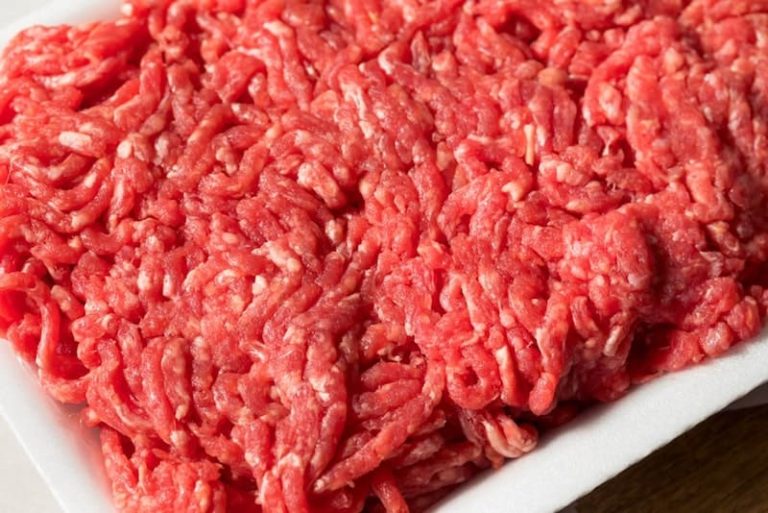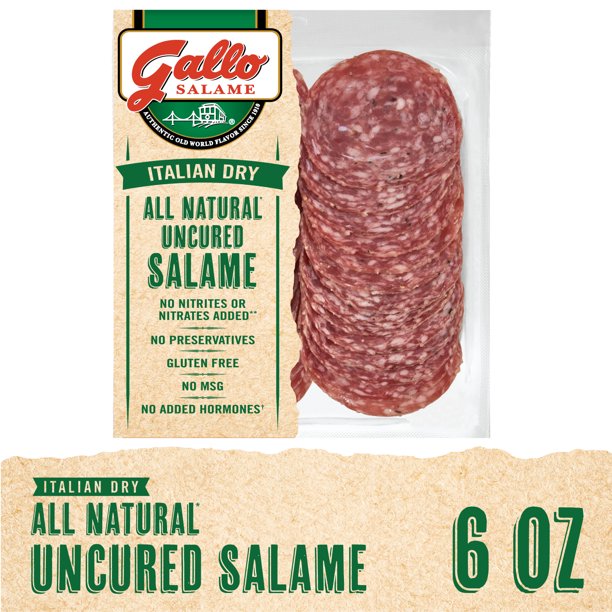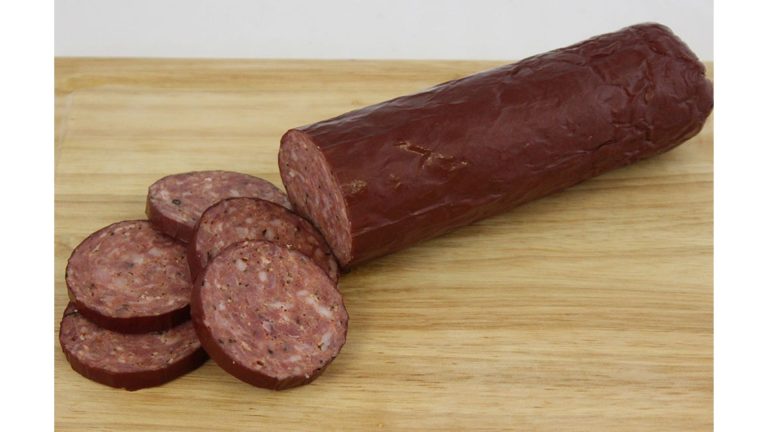Can Dogs Eat Sausage Casing?
Sausages play an important role in preserving ground meat by creating a specific shape and contributing to the overall flavor.
Sausages can be eaten or not, depending on the type of sausage they are made from.
You most likely won’t experience any problems if you consume an inedible casing by accident. What do you think about dogs?
Is it possible for dogs to eat sausage casing?
Yes! When dogs eat sausage, the casing is broken down into small pieces. These pieces are then digested into the dog’s digestive tract and used as part of the diet.
If you’re wondering about this, you’re either thinking about giving your furry friend a delicious treat or worried because they ate one without your permission.
The answer to the question of whether dogs can eat casing isn’t simple and depends on many factors.
There isn’t any need to worry in most cases, but there are a few signs that could indicate a problem.
Sausage casings can be harmful to dogs and what you should avoid will be clarified in this article.
Table of Contents
Factors to Consider
There are a few factors that can give you an idea of whether your dog can eat sausage casings or not.
Types of Sausage Casings
If your dog has eaten a sausage and you want to give it as a treat, the most important factor is whether the sausage is natural or artificial.
Natural casings are made from a layer of the animal’s intestines. These are usually very thin and can be eaten by dogs without any issues.
Natural casings don’t contain chemicals, which is important because dogs have a different and often more sensitive metabolism than humans.
The artificial casings are made of different types of material. Animals’ hides, bones, and tendons are some of the materials that are used to make the skin of animals.
They are usually eaten and are less expensive than natural ones. It’s a good idea to remove some of the thick Collagen casings before consuming them.
It’s a good idea to keep a close eye on your dog’s side effects if they consume a thick collagen shell.
Cotton or wood linters go through a specific manufacturing process to make the Cellulose casings.
If you want your dog to like the sausage, you should peel it off before giving it to him. The same goes for both plastic and cloth.
These shouldn’t be consumed because they are made from different materials.
It’s possible to eat and swallow all of the casings, but not all of them are easy to digest.
When we eat sausages, we can determine whether or not it is food based on how hard it is for us to chew it.
Dogs are not capable of doing this. Even if they notice it is hard to chew, they will most likely eat it anyway.
If you have to, you should always check the case and remove it if necessary.
It is important to keep an eye on your dog after they eat the natural casings because they can be a problem if not chewed correctly.
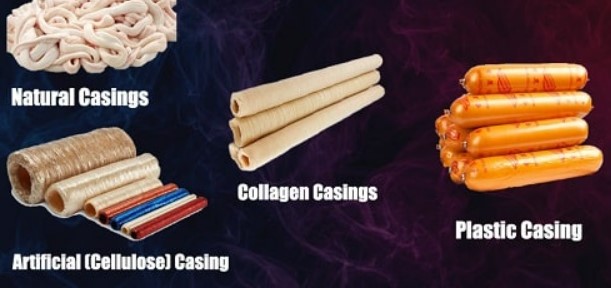
Dog’s Size, Age, and Overall Health
Your dog’s size, age, and any existing health conditions are some of the factors you should consider.
If your dog is a smaller breed, it is more likely to experience unwanted symptoms after consuming sausage.
This isn’t a universal rule, but it does mean that bigger dogs are not entirely safe.
You should keep an eye on your dog if they ate sausage casings regardless of the breed.
Older dogs are the same as younger dogs.
They are more likely to experience symptoms such as nausea and vomiting because of their stomach’s sensitive nature.
Sausage casings should not be given to senior dogs or puppies. It is better to be safe than sorry, and peel off the casings.
Sausage Type
If your dog ate sausage and shows signs of a problem, the issue may not be caused by the sausage itself.
Sausages can have high levels of fat that can be hard to digest for sensitive dogs, puppies, or seniors.
Sausages are rich in sodium, which can cause your dog to be dehydrated or have heart problems.
Dog owners want to give their pets sausage slices because of the high levels of sausage high levels of protein.
Many dog treats contain a lot of protein, and they are always a better choice.
Garlic, onions, pepper, or paprika can be hard for your dog to digest, in addition to different spices added to the meat.
Sausages may not be the cause of the strange symptoms your dog is experiencing. It may be the meat in some instances.
Symptoms You Should Monitor
Every dog owner knows their pet will eventually eat something they are not supposed to, even if you try to prevent them from doing so.
Sausages can cause different symptoms even though they are not always harmful.
- Vomiting
- Weakness
- Diarrhea
- Constipation
- Loss of appetite
- Abdominal pain
- Bloating
- Lethargy
The case can obstruct if it isn’t properly digested. Losing appetite and vomiting are some of the most obvious ones.
What Can You Do?
If your dog has eaten a lot of sausages and you are concerned, here are some things you can do.
Monitor your Dog
If it hasn’t been swallowed, your dog will likely pass it in a few days.
It is important to keep an eye on your dog in the following days because of the different symptoms that can be caused by casings.
Dehydration is a symptom of obstruction and it can be prevented by keeping the dog hydrated.
Your dog should be encouraged to drink fresh, clean water.
Skip a Meal
If you suspect your dog ate a lot of sausages, it is a good idea to give them less food than usual or skip a meal.
If you want to see your dog’s reaction, you can give your dog small portions of food throughout the day.
Go to a Veterinary Doctor
It is a good idea to take your dog to the vet if you notice any of the previously mentioned symptoms.
The vet may recommend an X-ray because the case may have been stuck in the stomach.
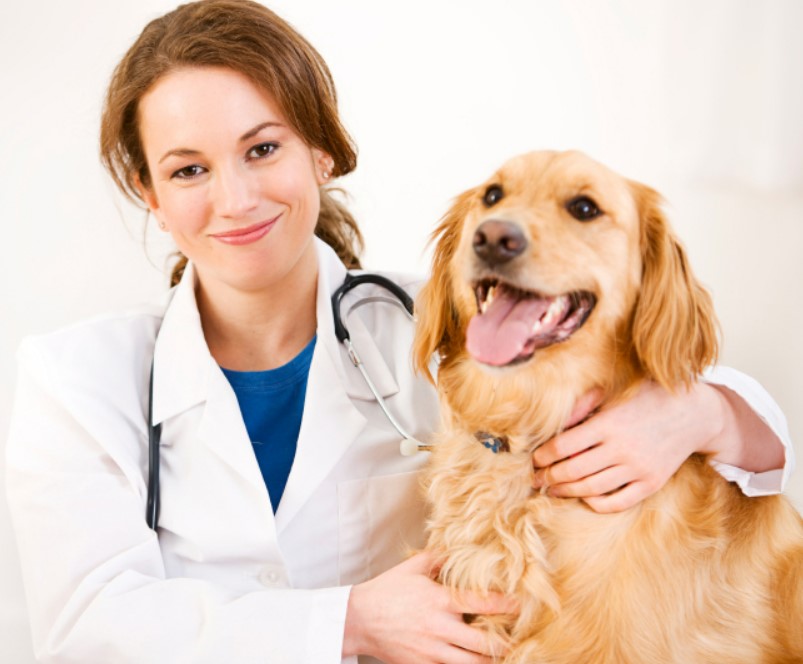
Conclusion
Is it possible for dogs to eat sausage casings? They are safe in most cases, but that doesn’t mean they are healthy.
Natural casings usually don’t cause any problems and artificial ones can’t be said to do that.
Your dog’s health can be at risk due to the different side effects of these cases.
If you don’t know if the sausage is natural or artificial, don’t give it to your dog, peel it off, or better yet, don’t give it at all.
There are many dogs treats with the same or higher levels that are safe and beneficial for your dog.

Foodie and a passionate cook, I am here to share all of what I know about cooking, kitchen, and food prepping.
Follow me for delicious and healthy recipes.

